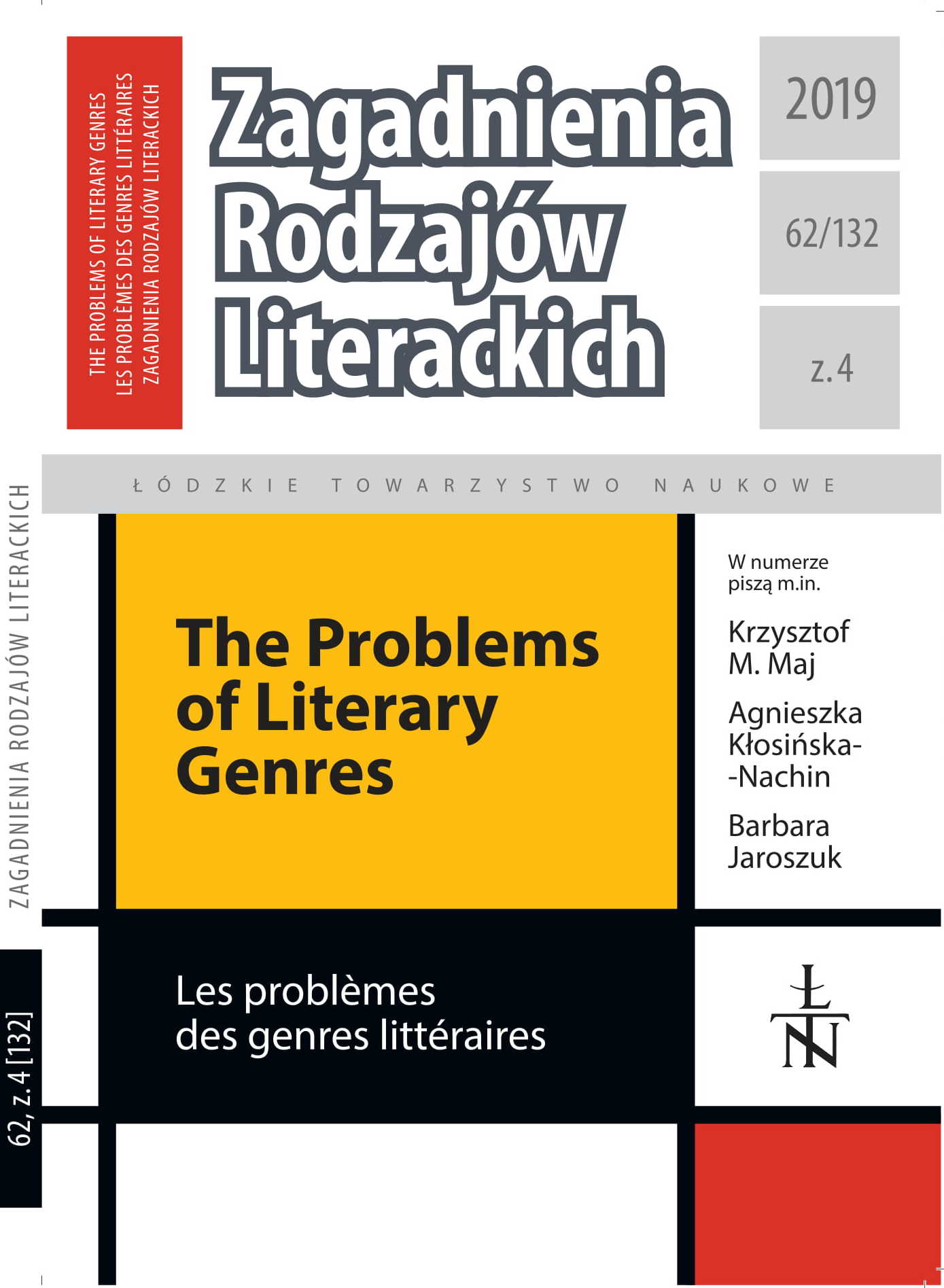Cisza i jej notacje – wokół partytur muzycznych twórców awangardy
DOI:
https://doi.org/10.26485/ZRL/2019/62.4/7Słowa kluczowe:
history of music, avant-garde, avant-garde music, silence, conceptual artAbstrakt
The article discusses a range of musical compositions from the avant-garde movement and conceptual art, in which silence is the dominant artistic matter. From little-known In futurum by Erwin Schulhoff and the acclaimed John Cage’s 4’33”, to the untamed wilderness of Cornelius Cardew’s visual experiments and the political silence of anarcho-punk Crass’s recordings — the paper gives rise to a look at the richness of meanings hidden in silence.
Liczba pobrań
Bibliografia
Alburger Mark (2003), La Monte Young to 1960, „21st century music” Vol. 10, No 3, http:// www.21st-centurymusic.com/ML210303.pdf [dostęp: 5.02.2019].
Berger George (2008), The story of Crass, Omnibus Press, London.
Borchardt Marcin (2014), Awangarda muzyki końca XX wieku. Przewodnik dla początkujących, T. I, Gdańsk.
Brill Dorothée (2010), Shock and the Senseless in Dada and Fluxus, Dartmouth College Press, Chicago.
Cage John (1949/1950), Lecture on nothing, https://seansturm.files.wordpress.com/2012/09/ john-cage-lecture-on-nothing.pdf [dostęp: 03.02.2019].
— (1952/1953), 4’33”, https://www.moma.org/collection/works/163616 [dostęp: 25.12.2018].
Cardew Cornelius (1967), Treatise, https://pl.scribd.com/doc/143813142/Cornelius-Car¬dew-Treatise-pdf [dostęp: 7.02.2019].
Carey Leo (2004), Sh-h-h, „New Yorker”, https://www.newyorker.com/magazine/2004/05/24/ sh-h-h-5 [dostęp: 12.02.2019].
Dayan Peter (2018), The Music of Dada: A lesson in Intermediality for our Times, Routledge, London.
Edelmann Bernd (2018), Sind Pausen Musik?, „Kultur & Technik”, nr 1, https://www.deutsches-museum.de/fileadmin/Content/010_DM/060_Verlag/060_KuT/2018/KT1-2018/00¬-00Edelmann.pdf [dostęp: 13.02.2019].
Kapelański Maksymilian (2017), Glenn Gould: Cisza, fonosfera i muzyka w odległym zapisie, „Glissando” nr 3 (32).
Katz Derek, Erwin Schulhoff, The OREL Foundation, http://orelfoundation.org/composers/article/erwin_schulhoff [dostęp: 07.02.2019].
Kim-Cohen Seth (2009), In the Blink of an Ear: Toward a Non-Cochlear Sonic Art, Bloomsbury Publishing USA, New York.
Knowles Alison (1961–1965), Event scores, [do¬https://www.aknowles.com/eventscore.html stęp: 6.02.2019].
Levi Erik (2000), Futurist Influences upon Early Twentieth-Century Music [w:] International Fu¬turism in Arts and Literature, series „European cultures. Studies in Literature and the Arts”, Walter de Gruyter, Berlin, New York.
Linfield Eva (1996), Rhetoric, Rhytm, and Harmony as Keys to Schutz’s „Saul, Saul, was verfolgst du mich?” [w:] Critica Musica: Essays in Honour of Paul Brainard, Routledge, London.
Michnik Antoni (2017), „If you get cut, you better bandage the knife”, „Glissando” nr 3 (32).
Mykietyn Paweł (2017), Paweł Mykietyn zaprasza na premierę najnowszego utworu, https:// www. youtube.com/watch?v=_TPvSvouvyw [dostęp: 06.02.2019].
Nyman Michael (2011), Muzyka eksperymentalna, tłum. Michała Mendyka, słowo/obraz tery¬toria, Gdańsk.
On Music Dictionary, hasło: General Pause, https://dictionary.onmusic.org/appendix/topics/ pause-markings [dostęp: 23.02.2019].
Osborne Richard (2018), Six Types of Silence [w:] Critical Approaches to the Production of Music and Sound, Bloomsbury Academic, London.
Potter Keith (2002), Four Musical Minimalists: La Monte Young, Terry Riley, Steve Reich, Philip Glass, Cambridge UP, Cambridge.
Pritchett James (1996), The Music of John Cage, Cambridge UP, Cambridge.
Reilly Lucas (2015), John Cage’s 4’33”, https://www.neatorama.com/2015/10/16/John-Ca¬ges-433/ [dostęp: 07.02.2019].
Schulhoff Erwin, In futurum, https://musescore.com/user/4513676/scores/1288876 [dostęp: 12.02.2019].
Słownik Języka Polskiego PWN, hasło: cisza, [dostęp: https://sjp.pwn.pl/szukaj/cisza.html 20.02.2020].
Stoebe Mo (2007), Treatise, [dostęp: https://www.youtube.com/watch?v=UCuAsB-ONAU 7.02.2019].
Szwajgier Krzysztof (2014), Ile trwa 4’33” Johna Cage’a?, „Teoria muzyki”, nr 5.
Tsagdis Georgios (2019), The aural: Heidegger and fundamental oto-cheiro-logy II, https://www. researchgate.net/publication/336009027_IX_THE_AURAL_HEIDEGGER_AND_ FUNDAMENTAL_OTO-CHEIRO-LOGY_II [dostęp: 02.03.2020].
Wilson Frances (2017), Sounds of Silence: thoughts on John Cage’s 4’33”, „Interlude” http://www. interlude.hk/front/sounds-silence-thoughts-john-cages-433/ [dostęp: 07.02.2019].
Wnuk Aleksander (2015), Aleksander Wnuk, Mani. Gonxha – Pierluigi Billone, https://www. youtube.com/watch?v=1dvqEybegv0 [dostęp: 20.02.2020].







